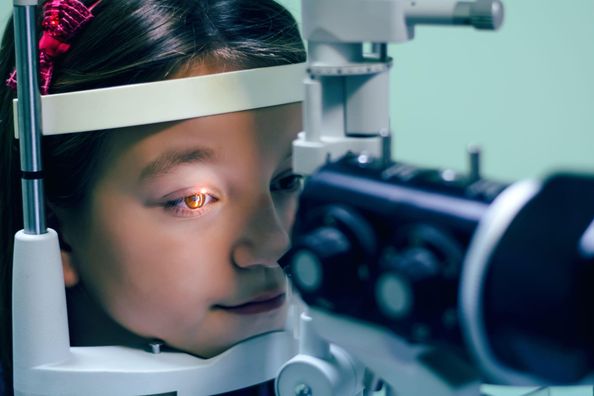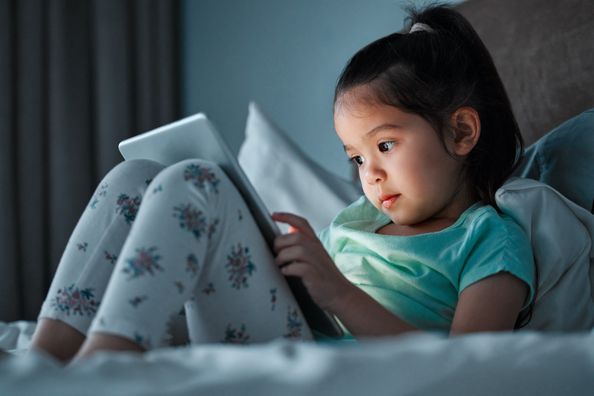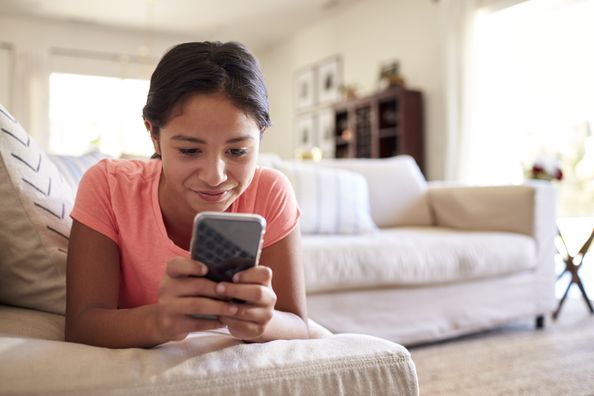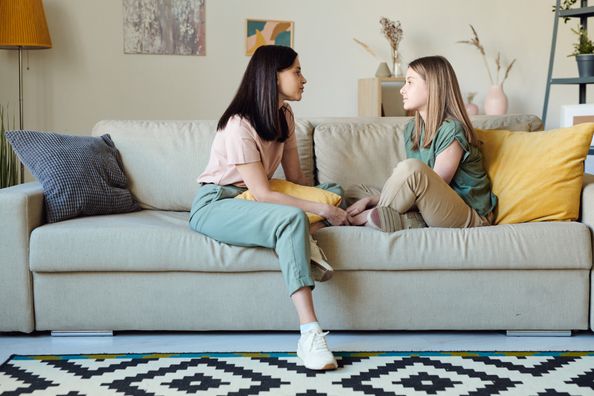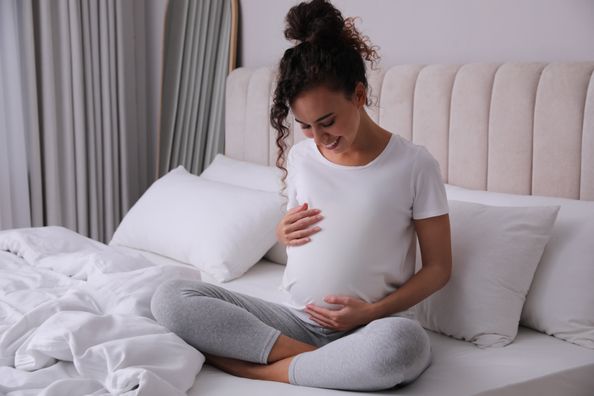Annual check-ups with the pediatrician, yearly dentist appointments, sports physicals…when it comes to preventive care for your child, you do it all.
But have you remembered to get their eyes checked?
If your child doesn’t appear to have vision problems, it’s easy to put eye health on the backburner. But getting your child’s vision checked regularly is a critical part of their well-being.
Take a look at these FAQs about pediatric eye exams.
What’s the Difference Between Vision Screenings and Comprehensive Eye Exams?
First things first. Before scheduling an appointment, make sure you know the type of care your child needs.
Vision screenings are exams to see if your child needs eye care. They don’t actually diagnose problems – they just let you know if there might be one. Schools provide free screenings for children in certain grades, but your child can also be screened by a pediatrician or eye care provider.
Screenings are a great first step, but they don’t tell the whole story. That’s where comprehensive eye exams come in. These in-depth exams go beyond basic screenings to assess your child’s eye health, diagnose vision or medical issues, and provide the right treatment if needed.
Do All Children Need Comprehensive Eye Exams?
It’s a good idea for all children to have comprehensive eye exams, even if they have had normal screenings. Screenings don’t check for all types of vision problems, so a comprehensive exam might be able to find something that a screening did not.
Exams can also help providers identify the early signs of eye diseases before they cause vision problems. Finding these diseases early makes it much easier to treat them and prevent future vision loss.
Regular eye exams are especially important if your child has diabetes. Diabetes increases the risk of developing diabetic retinopathy. This is a condition that can lead to blurred vision, dark or empty spots in vision, or even total vision loss. Early detection and treatment are key to preventing vision loss, but diabetic retinopathy doesn’t always cause noticeable symptoms at first. Regular eye exams allow your child’s provider to monitor their eye health closely and catch retinopathy early, ensuring timely treatment.
Also read: Annual Diabetic Eye Exam
How Often Should My Child Get an Eye Exam?
Throughout most of childhood, comprehensive eye exams should be on the yearly to-do list.
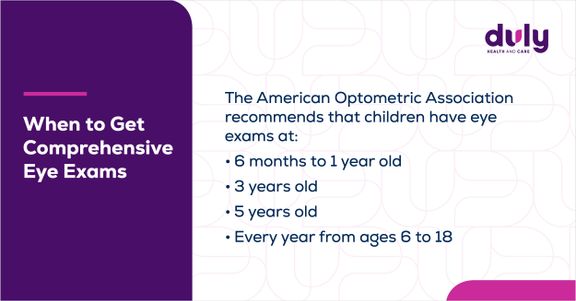
What Happens During a Vision Screening?
Vision screenings involve several steps, including:
- Using a light to check if your child’s eyes are straight and developing normally
- Taking pictures of their eyes to check for the need for glasses or issues like eye crossing or dark spots in the iris (the colored part of the eye)
- Using eye charts with shapes or letters to see how well your child can see from far away
- Assessing how well they see color to test for color blindness (this is usually only done once)
Even if your child can’t read or speak yet, their provider can still evaluate their vision by seeing how they respond when covering each eye.
Vision screening looks a bit different for infants. Your child’s provider will look at how well your baby’s eyes can follow a moving object, how their eyes respond to bright lights, if your baby blinks when a light shines in their eyes, and if both eyes focus together.
You don’t necessarily need to take your child to an eye doctor for a screening. During a well visit, their provider may ask if you would like to have your child screened right there in the office.
At Duly Health and Care, our pediatric providers offer in-office vision screening with the GoCheck Kids photoscreener tool. This tool is connected to a smartphone, it doesn’t require your child’s eyes to be dilated, and the screening is as simple as taking a photo of your child. Learn more about the GoCheck Kids photoscreener.
What Happens During a Comprehensive Eye Exam?
The comprehensive eye exam changes a little based on your child’s age. Infants (6 months to 2 years) are tested for depth perception, color vision, and how well their eyes can focus. Once they hit those terrible two’s, the eye exams become more in depth.
For children aged 2 to 5, eye exams test visual acuity (how well they can see an image or object at a certain distance), ability to see color, and check for conditions like amblyopia (commonly known as “lazy eye”). They also look at the health of the different parts of your child’s eye, such as the pupil and retina, and rule out eye problems like glaucoma.
Comprehensive eye exams for children aged 6 to 18 are very similar, but they include some additional tests. For example, their provider might check for hand-eye coordination or their ability to use both eyes together while reading.
Also read: Should I See an Optometrist or Ophthalmologist?
Will My Child Need to Have Their Pupils Dilated?
During a comprehensive eye exam, your child will likely need to have their pupils dilated. This is when the provider puts drops into their lower eyelid to make the pupils bigger. Once the pupils are bigger, they can see inside of the eyes and get a better idea of what’s happening in your child’s eyes. For children aged under 8 years, or patients who cannot convey which lens they can see more clearly with, dilation is the most accurate way to measure for glasses.
Dilating drops can cause blurry vision for a few hours, so if your child is going back to school after their appointment, make sure their teacher knows that they might have trouble seeing for a little while. Also, dilation can make people extra sensitive to light, so you may want to grab a pair of sunglasses for your child.
If your child is nervous about getting eyedrops, let them know they may feel a tiny bit of burning or stinging, but reassure them that it will go away after a few seconds.
What Types of Problems Can Eye Exams Find?
Eye exams can help a provider discover many types of eye and vision problems. Some of the most common eye conditions in children are:
- Myopia (nearsightedness), where they can see things close up but have trouble seeing objects that are farther away
- Hyperopia (farsightedness), where they can see distant objects more clearly than they can see close ones
- Astigmatism, when parts of the eye called the cornea and lens are abnormally shaped
- Amblyopia (lazy eye), where one eye is stronger than the other
- Strabismus (crossed eyes), where both eyes do not focus on the same object at the same time
Also read: Retinal Conditions and Treatment Options
Whether it’s your child’s first exam or they’re an old pro, our team is here to answer your and your child’s questions about pediatric eye exams. Learn about comprehensive pediatric eye care at Duly Health and Care and schedule an appointment with an ophthalmologist online.
Health Topics:

